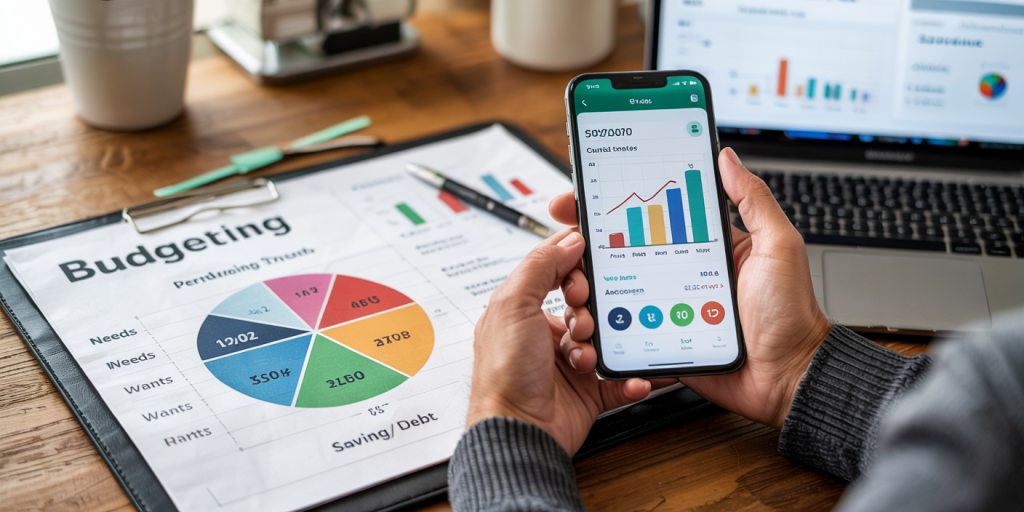How to Stop Living Paycheck to Paycheck for Good
Living paycheck to paycheck is a harsh reality for millions of people worldwide. According to a report by the Federal Reserve in 2023, nearly 60% of Americans struggle to cover an unexpected $400 expense. This financial fragility often creates a cycle of stress, limited financial growth, and missed opportunities. Breaking free from this pattern is not only essential for peace of mind but also for long-term economic stability.
Escaping the paycheck-to-paycheck lifestyle requires a multifaceted approach, including strategic budgeting, increasing income streams, managing debt effectively, and prioritizing financial education. In this article, we explore actionable steps and proven strategies, supported by data and real-world examples, to help you stop living paycheck to paycheck for good.
Understanding the Paycheck-to-Paycheck Cycle
The first step in solving any problem is understanding its root causes. Many individuals find themselves in the paycheck-to-paycheck cycle due to a combination of low income, high expenses, and insufficient savings. According to a 2022 survey by Bankrate, 39% of Americans do not have enough savings to cover three months of expenses, highlighting the lack of a financial safety net.
Often, this living pattern arises from a lack of budgetary control. For instance, Melissa, a 34-year-old marketing professional from Ohio, shared that she wasn’t tracking her spending and regularly used credit cards to cover essential expenses. It wasn’t until she began monitoring her finances with a detailed budget that she recognized unnecessary spending habits, such as subscribing to multiple streaming services she rarely used.
Moreover, these financial habits are reinforced by environmental and psychological factors. Companies employ marketing strategies that encourage consumerism, while psychological phenomena like instant gratification push individuals towards spending rather than saving. Understanding these elements allows for better control and more sustainable financial behavior—which is the first big step toward financial freedom.
Creating a Sustainable and Realistic Budget
Budgeting is the cornerstone of stopping the paycheck-to-paycheck cycle. Developing a sustainable and realistic budget empowers you to allocate funds to necessary expenses, savings, and debt repayment with clarity and control.
A practical starting point is implementing the 50/30/20 rule, where 50% of income goes to needs, 30% to wants, and 20% to savings and debt repayment. This rule offers flexibility without sacrificing savings. For example, if you earn $3,000 monthly, you would allocate $1,500 for essential expenses, $900 for lifestyle choices, and $600 into your financial goals.

| Category | Percentage | Example for $3,000 Income |
|---|---|---|
| Needs | 50% | $1,500 |
| Wants | 30% | $900 |
| Savings/Debt | 20% | $600 |
Practical tools can assist with budgeting, such as apps like Mint or YNAB (You Need a Budget), which track expenses in real-time and help identify spending leaks. Users such as Tom, a small business owner from Texas, found that shifting to YNAB allowed him to reduce discretionary spending by 25%, accelerating his debt payoff and increasing his emergency fund.

Increasing Income and Diversifying Revenue Streams
For many people, living paycheck to paycheck is rooted in insufficient income relative to living expenses. Increasing income can be a powerful antidote to financial strain. This can be achieved through traditional means such as asking for a raise or seeking higher-paying job opportunities or through creating additional streams of income.
Consider Sarah, a graphic designer who started freelancing on the side. By dedicating 10 hours a week to freelance projects, she added an extra $800 monthly, which she directed entirely toward her savings. Over the course of a year, this additional income significantly improved her financial stability and broke her reliance on her primary paycheck.
Alternative income sources such as passive income streams—investing in dividend stocks, renting out property, or starting a small e-commerce business—are increasingly viable options. According to a 2023 report by Statista, 45% of millennials actively seek side hustles as part of their financial strategy, reflecting a growing trend in income diversification.

| Income Strategy | Time Commitment | Initial Investment | Potential Monthly Earnings |
|---|---|---|---|
| Freelance work | 10–20 hours | Low | $500–$1,000 |
| Dividend stock investment | Minimal | Moderate | Variable ($50–$200+) |
| Rental property | Varies | High | $1,000+ |
| E-commerce business | 15+ hours | Moderate | $200–$2,000+ |
By actively seeking new income avenues, individuals can fortify their financial position and create a buffer against unpredictable expenses or income fluctuations.
Managing and Eliminating Debt Strategically
Debt is a significant cause of the paycheck-to-paycheck cycle. High-interest debt, such as credit card balances, can consume a large portion of monthly income, making financial progress nearly impossible. According to the American Debt Survey of 2023, the average U.S. household owes $6,270 in credit card debt alone.
To break out of this cycle, debt must be managed with precision and commitment. Two primary strategies have proven effective: the debt snowball method and the debt avalanche method. The debt snowball method advocates paying off the smallest debt first to gain momentum while the debt avalanche method suggests tackling the highest interest rate debts first to reduce overall interest.
Consider Jake, who owed $10,000 spread across multiple credit cards. He chose the debt avalanche method to prioritize a card with a 24% interest rate. By focusing on this debt first while making minimum payments on others, he saved nearly $1,500 in interest within a year. This clear outcome motivated him to stay on track.
Creating a debt repayment plan, using consolidation loans, or negotiating lower interest rates can accelerate this process. Tools like Debt Payoff Planner apps help visualize and track progress.
Building an Emergency Fund for Financial Security
One of the most effective weapons against the paycheck-to-paycheck trap is an emergency fund. This is a reserved pool of cash accessible in case of unpredicted expenses like medical emergencies, car repairs, or job loss. According to a CNBC survey from late 2023, 44% of Americans don’t have enough savings to cover an unexpected $1,000 expense.
A common recommendation is saving three to six months’ worth of living expenses. For example, if your monthly expenses are $2,000, your emergency fund should ideally be between $6,000 and $12,000. This fund acts as a financial buffer, allowing you to avoid high-interest debt when unexpected costs arise.
Building this fund may seem daunting initially but starting small helps. Setting aside $50 or $100 monthly automatically through direct deposit can accumulate savings over time without feeling burdensome. For instance, Nina, a school teacher, used a separate high-yield savings account and arranged automatic transfers. Within two years, she had enough to cover six months of expenses, providing her with newfound peace of mind and security.
The Road Ahead: Sustainable Financial Freedom
Stopping the paycheck-to-paycheck cycle is achievable but requires planning, discipline, and perseverance. The future of personal finance is leaning heavily on digital tools, increased financial literacy, and shifting employment patterns. Technology now offers individuals unparalleled access to budgeting apps, investment platforms, online courses, and automated savings solutions.
Financial education plays a pivotal role in sustaining long-term freedom. According to a 2023 global financial literacy survey by the OECD, countries with higher indices of financial education report lower percentages of people living paycheck to paycheck. Investing time in learning about credit management, investing, and money psychology can pay dividends throughout life.
Furthermore, as remote work and gig economies evolve, individuals can leverage these opportunities for greater earning potential and flexibility. This means that financial independence is not just about cutting expenses but smartly growing income and assets.
By integrating disciplined budgeting, income diversification, debt management, and emergency preparedness—coupled with ongoing education—you set the stage for lasting financial stability. The key lies in consistency and adapting strategies to your life context.
Escaping the paycheck-to-paycheck lifestyle is a journey, not a sprint. By implementing the strategies discussed—from understanding your financial behavior to building wealth through multiple streams—you can transition towards a secure, empowered financial future. The path exists, and with focused effort, you can take control of your money, reduce stress, and thrive economically for years to come.
